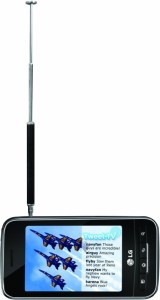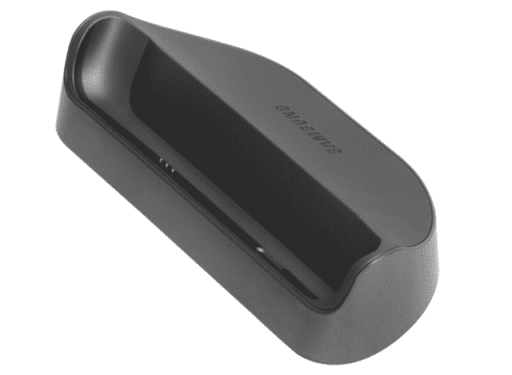Television is a medium that is evolving at a rapid pace these days. Companies are coming out with bigger and slimmer TV screens and immersive, customizable viewing experiences with Internet connectivity, widgets, and apps; and broadcasters are looking at ways to move beyond high-definition. Some of the new technologies that’s just hitting the market should make anyone giddy with excitement: 3D TV that approximates the view in a movie theater, multiple monitors designed to present a wall-size picture, and ultra-definition resolution are some of the attractions.
The team at PC World offers this look into the future of television:
3D Television
When tech companies tried to make “3D TV” the catch-phrase of CES 2010, many reviewers were skeptical. What’s the demand for 3D TV? How many people want to don a pair of expensive and dorky-looking glasses just to watch TV? Is there enough 3D content out there for 3D TV to be more than an expensive curiosity?
Scott Birnbaum, vice president of Samsung’s LCD business, says that the demand for 3D TV will skyrocket in the next couple of years, fueled by televised sports. ESPN plans to broadcast this year’s soccer World Cup (which is being held in South Africa) in 3D.
If you’re unsure whether a 3D TV is a good investment, you may be reassured to learn that 3D TVs can handle 2D video just fine; also, Samsung’s 3D TV can convert 2D content into “3D” content (that is, content with simulated depth, but not “real” 3D content). In addition, Samsung has formed a “global strategic partnership” with DreamWorks Animation, the studio that produced such 3D features as Monsters vs Aliens and How to Train Your Dragon, to make 3D television more feasible, with Samsung producing the hardware and DreamWorks producing the content.
Sony plans to introduce its 3D TVs in Japan on June 10, and will start selling 3D TVs worldwide at around the same time. Leaked reports indicate that LG Electronics will begin delivering full-array LED-backlit LCD 3D TVs in the near future. For its part, Panasonic has promised 3D Plasma TVs by this summer, and it launched one model in March at Best Buy.
Though a number of companies are launching 3D TVs this year, the industry faces quite a few unresolved issues. 3D shutter glasses, which usually come bundled with 3D Blu-ray disc players and 3D TVs, can be quite expensive on their own (around $100 for a low-end pair). In addition, some people may experience bad effects from watching 3D TV–the list includes teens, children, the elderly, pregnant women, sufferers of serious medical conditions, and individuals who are sleep-deprived or inebriated, according to Samsung’s 3D TV Warning. And finally, 4 to 10 percent of the population can’t even see 3D TV because they’re unable to process stereoscopic imagery (optometrists say that the condition is treatable, however).
Samsung has produced a 3D display that lets you see the 3D effect without glasses, for the “Digital Out of Home” market (for example, for screens used on digital billboards and signage). The technology uses a lenticular lens to produce 3D effects that are visible without special glasses; initially advertisers will employ it to display ads in places like airports, as a novel way of catching the attention of passersby. Though this nonglasses technology is not as yet suited for home entertainment, it could be someday. And if 3D TV ever manages to ditch the glasses, it may really take off.
Superthin Bezels
LCD panels keep getting thinner and thinner, but what about those annoyingly thick screen bezels? Enter the Runco WindowWall, which Samsung developed for high-end home-theater enthusiast vendor Runco.
An LCD screen consists of two pieces of glass that must be bonded together around the edges, and this creates a certain amount of dead space where LCD two panels abut. Samsung has reduced the amount of dead space between contiguous panels to just 7.33mm, however, giving the WindowWall an almost seamless look.
The 1366-by-768-pixel panels in the WindowWall measure 46 inches diagonally. From close up you can see the 7.33mm-thick bezels between panels, but if you look at the whole picture from about 15 feet away, the big picture looks great.
The WindowWall is scalable and can consist of as few as four or as many as twenty screens. You can hook up the screens to display one image across all of the screens or to display something different on each screen. To make the system work in sync, however, you must have a display controller unit and power supply unit for every four screens.
TV manufacturers already can make huge, seamless LCD screens–but the WindowWall is a more economical product. For one thing, shipping a 92-inch screen costs a lot more than shipping four 46-inch screens does. Unfortunately, the technology isn’t consumer-friendly at the moment: A nine-screen setup costs around $100,000.
Visible Light Communication
One day, you may be able to obtain customized information directly from your television’s LED backlights, thanks to a new technology dubbed “Visible Light Communication.” The LED lights transmit information by flickering at high frequencies; a device with a photodiode (for example, a cell phone) then picks up the transmitted signals.
According to Samsung, this new technology could have a profound impact on the future of TV, in part because it would allow advertisers to take a completely different approach to airing commercials.
Though Samsung says that products featuring Visible Light Communication won’t arrive anytime soon, the technology has been demonstrated with working prototypes. The Nakagawa Laboratory of Tokyo’s Keio University has done extensive research in Visible Light Communication, as well.
Ultra-Definition TV
Visible Light Communication, WindowWalls, and 3D TV aren’t all that’s in store for home-theater systems. TVs with 240Hz refresh rates and Internet connectivity are becoming increasingly common, and 480Hz sets are slated to arrive later this year. Farther down the road, ultra definition (with 3840-by-2160-pixel resolution in place of high definition’s 1920-by-1080-pixel resolution) could make its way into your living room.
Ultra definition (UD) will become more critical as display sizes get larger, Birnbaum says. Samsung has demonstrated a UD 82-inch LCD panel, but UD content is not readily available yet, and as a result no market for the technology exists yet. Like HDTV, UDTV will be able to handle lesser (720p or 1080p) content.
A significant feature of ultra-definition television will be its zoom capability. As screens get bigger, viewers will be able to zoom in to get a close-up view of the action. “Imagine watching a football game, pausing the action, and zooming in on your own instant reply to ‘make the call’ on a questionable end-zone catch. UD will get viewers completely involved in the game,” Birnbaum says.
So that’s what awaits you in the future of television: an immersive viewer experience, personalized content, and huge screens. It looks as though Samsung and its fellow TV producers are out to make movie theaters obsolete. But much of this technology is still far ahead of the market–so you’ll have to continue paying for movies for at least a couple more years.
Source: PC World.




Pingback: O futuro incrível de entretenimento em casa: 3d, windowwalls e muito mais
My vision is what I would call Virtual 3D. The concept being that instead of using glasses to watch a 3D source(movie, tv etc) from a couch 6-12 feet away, that putting on the glasses actually puts the viewer at the Frame of the TV looking in, instead of 6-12 feet away. In this manner watching a sporting event will have the affect of sitting in the stands watching the game. For movies, such as in Avatar when showing the plane scene, you’ll be in the plane looking down the row of seats / people.
For me, this will be the best merging of 2D / 3D television. Watch 2D channels without glasses, 3D with glasses for full immersion into a program. This would also make screen size less important.
I agree with this. Hope they would create a 3D TV that doesn't require to wear glasses to enjoy watching your favorite movie, show, or event.
home theaters are very common these days with price ranging from several hundred to several thousand dollars,..
Pingback: REVIEW IT BEFORE YOU BUY IT!!!
Pingback: SHOP ELECTRONICS!!!